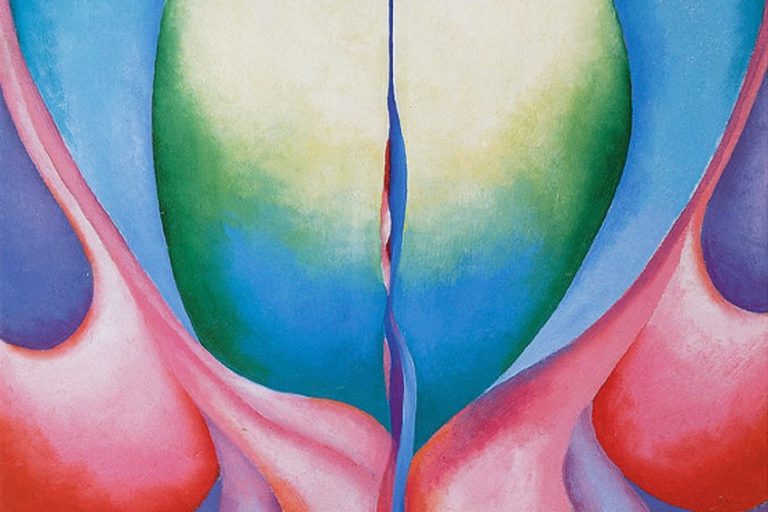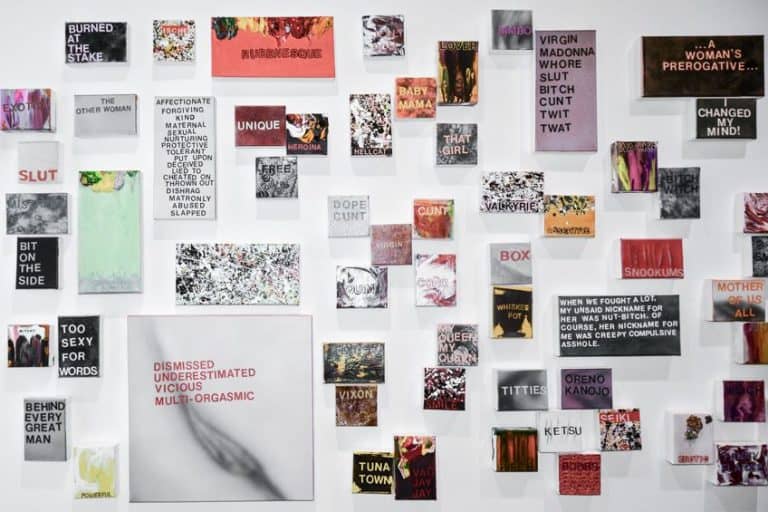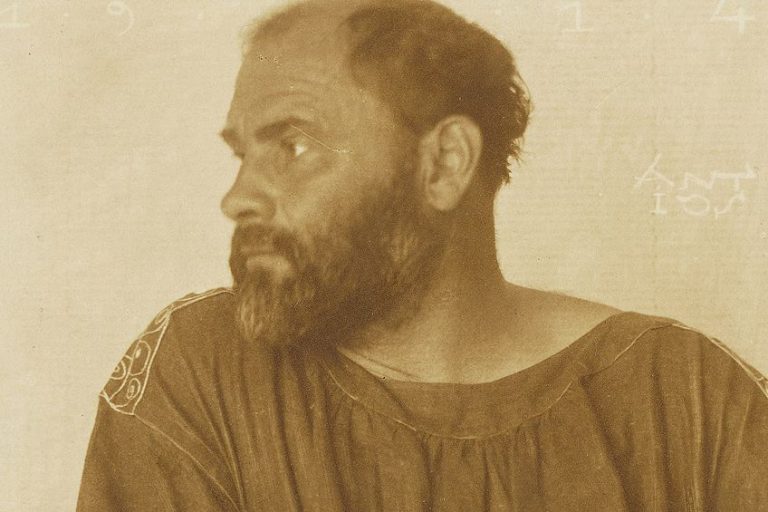Natural Form Artists – 10 Creatives Inspired by the Earth
In the realm of artistic expression, natural form artists have emerged as a captivating and innovative cohort, their creations serving as a testament to the intrinsic beauty found in the world around us. But what is a natural form? This fundamental question serves as the crux of exploration for these artists, who draw inspiration from the wonders of the natural world. Channeling the essence of nature into their works, these artists seamlessly blend creativity with the organic, crafting awe-inspiring pieces that resonate with the inherent splendor of the earth. From sculptures that mimic the fluidity of river currents to paintings that capture the ephemeral beauty of blooming flowers, the realm of natural art is vast and diverse, offering a rich tapestry of inspiration for these dedicated artisans. In this article, we delve into the captivating world of natural form artists, exploring their motivations, techniques, and the profound connection between their artistry and the natural world.
Table of Contents
- 1 Natural Forms Artists: What Is a Natural Form?
- 2 Famous Natural Form Artists
- 2.1 Henri Rousseau (1844 – 1910)
- 2.2 Georgia O’Keeffe (1887 – 1986)
- 2.3 Frida Kahlo (1907 – 1954)
- 2.4 Yayoi Kusama (1929 – Present)
- 2.5 Agnes Denes (1931 – Present)
- 2.6 Walter De Maria (1935 – 2013)
- 2.7 David Hockney (1937 – Present)
- 2.8 Robert Smithson (1938 – 1973)
- 2.9 Nancy Holt (1938 – 2014)
- 2.10 Andy Goldsworthy (1956 – Present)
- 2.11 Olafur Eliasson (1967 – Present)
- 3 Frequently Asked Questions
Natural Forms Artists: What Is a Natural Form?
Natural forms, in the artistic context, transcend their physical existence to become conduits of storytelling and aesthetic exploration. They encapsulate the essence of organic shapes, patterns, and structures found in the world, acting as visual representations of the interconnectedness of life. From the sinuous flow of riverbanks to the intricacies of a spider’s web, natural forms encapsulate the harmonies and irregularities that define our surroundings.

Artists, throughout history, have been drawn to the awe-inspiring beauty of the natural world, finding profound inspiration in its textures, colors, and rhythms. Nature, with its ever-changing landscapes and resilient life cycles, serves as a boundless reservoir of creative stimulus. This symbiotic relationship between art and nature has given birth to a specialized cadre of creators known as natural forms artists.
Famous Natural Form Artists
These artists are not merely observers but interpreters, translating the poetry of the earth into sculptures, paintings, and installations that evoke a deep sense of connection to the environment.
In this exploration, we delve into the multifaceted realm of ten artists inspired by nature.
Henri Rousseau (1844 – 1910)
| Date of Birth | 21 May 1844 |
| Date of Death | 2 September 1910 |
| Place of Birth | Laval, Mayenne, France |
| Nationality | French |
| Art Movement | Post-Impressionism and Naïve or Primitive art |
| Mediums Used | Oil painting |
| Famous Artworks |
|
Henri Rousseau, the self-taught French painter, emerged as a singular force in the art world, enchanting audiences with his imaginative landscapes and lush depictions of natural forms. Born in 1844 in Laval, France, Rousseau’s unique artistic journey was deeply influenced by his appreciation for the enchanting beauty of the natural world, despite having never received formal training.

Rousseau’s fascination with the untamed allure of nature is evident in his masterful painting, The Dream (1910). This iconic work transports viewers into a dreamlike jungle, where exotic flora and fauna intertwine with the artist’s vivid imagination. Rousseau’s meticulous attention to detail and the fantastical portrayal of natural forms in The Dream exemplify his ability to transcend the boundaries of reality, creating a mesmerizing and immersive experience for the viewer. Known as “Le Douanier” (the customs officer) due to his former occupation, Rousseau’s artistic oeuvre often featured jungles and exotic landscapes, showcasing his unparalleled ability to blend reality and fantasy.
His dedication to capturing the enchanting essence of nature in his paintings has left an indelible mark on the art world, solidifying Henri Rousseau as an innovative painter whose art still delights and encourages other artists.
Georgia O’Keeffe (1887 – 1986)
| Date of Birth | 15 November 1887 |
| Date of Death | 6 March 1986 |
| Place of Birth | Sun Prairie, Wisconsin, United States |
| Nationality | American |
| Art Movement | American Modernism |
| Mediums Used | Oil painting, watercolor, and charcoal |
| Famous Artworks |
|
Georgia O’Keeffe, a pioneering American modernist painter, is renowned for her profound connection to nature and her ability to translate the subtleties of natural forms onto canvas. Born in 1887, O’Keeffe’s artistic journey was deeply influenced by her experiences with the landscapes of the American Southwest. The immensity of the desert and the complicated details of its flora became central motifs in her work.

O’Keeffe’s fascination with natural forms is strikingly evident in her iconic painting, Jimson Weed/White Flower No. 1 (1932). This masterpiece is a testament to her unique ability to magnify the inherent beauty of a single flower, rendering it larger than life on the canvas. The delicacy of the petals, the ethereal quality of the white bloom, and the meticulous attention to detail all reflect O’Keeffe’s deep reverence for the intricacies of the natural world. Through her keen observation and distinctive style, O’Keeffe invites viewers to see beyond the ordinary, encouraging a profound appreciation for the elegance embedded in even the smallest elements of nature.
Her legacy as a Natural Form Artist endures, as her work continues to inspire a connection between art and the organic beauty that surrounds us.
Frida Kahlo (1907 – 1954)
| Date of Birth | 6 July 1907 |
| Date of Death | 13 July 1954 |
| Place of Birth | Coyoacán, Mexico |
| Nationality | Mexican |
| Art Movement | Surrealism and Mexicanidad |
| Mediums Used | Painting, drawing and printmaking |
| Famous Artworks |
|
Frida Kahlo, the iconic Mexican painter, transcended the boundaries of artistic expression through her profound connection to nature and its transformative power. Born in 1907 in Coyoacán, Mexico, Kahlo’s tumultuous life experiences, coupled with her enduring physical and emotional pain, led to her fame as an artist inspired by nature. Natural forms served as both muse and metaphor in Kahlo’s oeuvre, offering a rich tapestry of symbolism and vivid imagery. One of her most famous paintings, The Two Fridas (1939), encapsulates the intertwining of her personal and artistic narratives. In this self-portrait, two versions of Kahlo are depicted against a stormy sky, connected by a vein that weaves through their hearts.

The natural elements, including the roiling clouds and the symbolic vein, poignantly reflect Kahlo’s exploration of identity, duality, and the visceral connection between herself and the world around her. Kahlo’s artistry extends beyond conventional representations of nature, as she employs rich symbolism and vibrant colors to convey the emotional and physical landscapes of her own life.
Her ability to infuse natural forms with personal narratives has solidified her as a cultural icon, and her work continues to inspire artists and admirers alike, serving as a testament to the enduring power of art in expressing the complexities of the human experience.
Yayoi Kusama (1929 – Present)
| Date of Birth | 22 March 1929 |
| Age | 94 years old |
| Place of Birth | Matsumoto, Nagano, Japan |
| Nationality | Japanese |
| Art Movement | Contemporary art and Pop art |
| Mediums Used | Painting, sculpture, installation, performance art, and writing |
| Famous Artworks |
|
Yayoi Kusama, a trailblazing Japanese contemporary artist, is celebrated for her avant-garde exploration of natural forms through a lens of vibrant colors and repetitive patterns. Born in 1929, Kusama’s journey as an artist is deeply rooted in her early experiences with the organic landscapes of her childhood. Drawing inspiration from the mesmerizing shapes and patterns found in nature, Kusama’s work has transcended traditional boundaries, encompassing paintings, sculptures, installations, and performances.
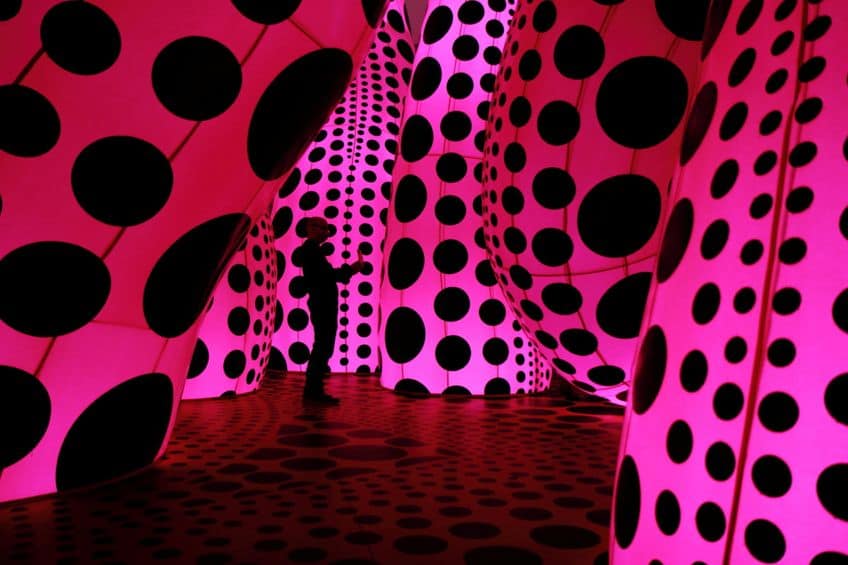
One of her most renowned paintings, Infinity Nets (1958), exemplifies Kusama’s unique interpretation of natural forms. In this piece, Kusama employs repetitive, intricate patterns reminiscent of organic structures such as cells or the infinite expanse of a spider’s web. The meticulous repetition and meticulous attention to detail in Infinity Nets not only showcase Kusama’s fascination with natural forms but also reveal her lifelong struggle with mental health, as she describes her art as a form of catharsis and escape. Kusama’s oeuvre, with its kaleidoscopic and immersive depictions, invites viewers into a realm where the boundaries between self and nature blur.
Through her distinctive artistic language, Kusama continues to captivate audiences and remains a transformative figure in the global art landscape.
Agnes Denes (1931 – Present)
| Date of Birth | 31 May 1931 |
| Age | 92 years old |
| Place of Birth | Budapest, Hungary |
| Nationality | American |
| Art Movement | Environmental art and Conceptual art |
| Mediums Used | Drawing, sculpture, and environmental works |
| Famous Artworks |
|
Agnes Denes, a Hungarian-born American artist, stands as a visionary figure in contemporary art, weaving intricate connections between nature, philosophy, and mathematics. Born in Budapest in 1931, Denes’ artistic exploration is deeply rooted in her fascination with natural forms and their inherent connection to the broader cosmic order. One of Denes’ notable works reflecting this inspiration is Tree Mountain – A Living Time Capsule (1992-1996). This monumental environmental sculpture, located in Finland, combines Denes’ interest in ecological sustainability with her reverence for natural growth.

Comprising 11,000 trees planted in a precise mathematical pattern on a barren site,Tree Mountain – A Living Time Capsule serves as a living testament to the transformative power of nature and the intersection between human intervention and organic processes. Denes’ artistic practice, characterized by a multidisciplinary approach that includes drawing, sculpture, and environmental works, exemplifies a profound understanding of the intrinsic beauty found in natural systems.
Her ability to seamlessly integrate ecological consciousness with aesthetic expression marks her as a trailblazer in environmental art, urging viewers to reflect on their relationship with the natural world and the interconnectedness of all living things.
Walter De Maria (1935 – 2013)
| Date of Birth | 1 October 1935 |
| Date of Death | 25 July 2013 |
| Place of Birth | Albany, California, United States |
| Nationality | American |
| Art Movement | Minimalism and Land art |
| Mediums Used | Sculpture, installation art, land art, and drawing |
| Famous Artworks |
|
Walter De Maria, an American sculptor, composer, and conceptual artist, carved a distinctive niche in the art world with his profound engagement with natural forms. Born in 1935, De Maria’s innovative works often blur the lines between sculpture, land art, and minimalism, drawing inspiration from the inherent beauty of the environment. De Maria’s fascination with natural forms is exemplified in his iconic installation, The Lightning Field (1977).

Located in a remote area of New Mexico, this expansive artwork comprises 400 polished stainless steel poles, each measuring 20 feet in height and arranged in a grid. The sculpture interacts dynamically with its surroundings, creating a mesmerizing play of light and shadow as the sun moves across the landscape. The natural forms of the earth and the atmospheric conditions become integral components of the artwork, inviting viewers to engage with the ever-changing environment. Through sculptures like The Lightning Field, De Maria sought to amplify the viewer’s connection to nature, transforming the landscape into a canvas for artistic expression.
His legacy endures as a pioneer who defied traditional boundaries, forging a profound and harmonious relationship between art and the natural world.
David Hockney (1937 – Present)
| Date of Birth | 9 July 1937 |
| Age | 86 years old |
| Place of Birth | Bradford, West Yorkshire, England |
| Nationality | British |
| Art Movement | Pop Art and Photorealism |
| Mediums Used | Painting, drawing, printmaking, photography, and digital art |
| Famous Artworks |
|
David Hockney, the eminent British artist, has crafted an enduring legacy by seamlessly intertwining his artistic vision with the vivid beauty of natural forms. Born in Bradford, England, in 1937, Hockney’s deep-seated connection to the landscapes around him is palpable in the myriad brushstrokes that compose his vibrant compositions. The allure of nature, with its ever-changing colors, textures, and perspectives, serves as both muse and medium for Hockney’s innovative approach to art.

Among his many masterpieces, A Bigger Splash (1967) stands out as a quintessential example of Hockney’s fascination with natural forms. This iconic painting captures the aftermath of a diver’s plunge into a sunlit swimming pool, freezing the ephemeral moment in time. The depiction of the splash, the shimmering water, and the geometric patterns of the pool’s surroundings reflect not only Hockney’s technical prowess but also his ability to distill the dynamic energy and beauty inherent in the natural world. Hockney’s exploration of natural forms extends beyond traditional canvas boundaries, encompassing mediums like photography and digital art.
His enduring commitment to translating the essence of the natural world into captivating visual narratives has positioned him as a luminary in contemporary art, leaving an indelible mark on the intersection of creativity and nature.
Robert Smithson (1938 – 1973)
| Date of Birth | 2 January 1938 |
| Date of Death | 20 July 1973 |
| Place of Birth | Passaic, New Jersey, United States |
| Nationality | American |
| Art Movement | Land Art and Earthworks |
| Mediums Used | Sculpture, drawing, and photography |
| Famous Artworks |
|
Robert Smithson, a pivotal figure in the Land Art movement, redefined the boundaries of contemporary art with his immersive installations that engage with the inherent beauty of natural forms. Born in 1938, Smithson’s innovative approach reflected a deep fascination with the earth’s geological formations and the interplay of natural forces. Smithson’s work often drew inspiration from the dynamic forms found in nature, as seen in his seminal work, “Spiral Jetty” (1970).
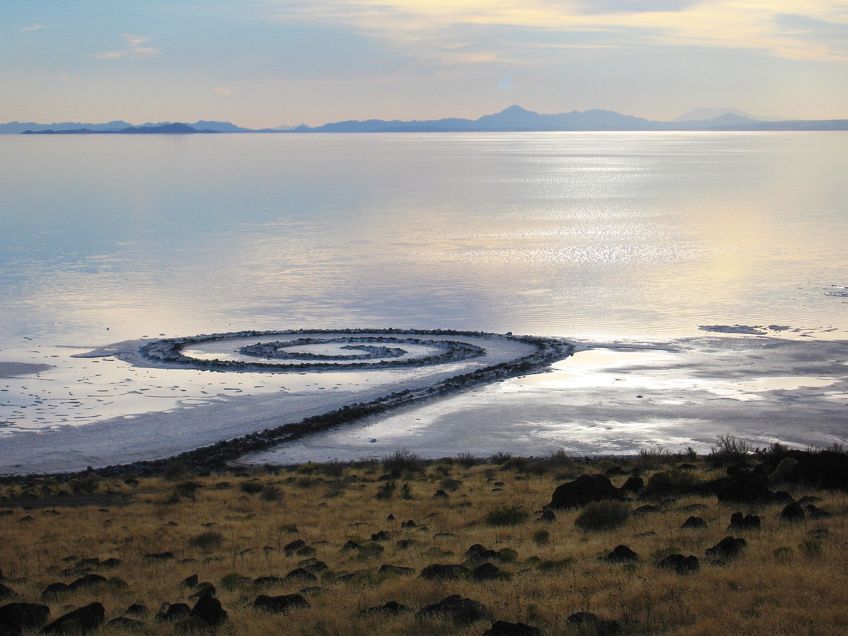
Located on the northeastern shore of the Great Salt Lake in Utah, this monumental sculpture comprises over 6,000 tons of black basalt rocks and earth, arranged in a 1,500-foot-long coil that extends into the lake’s red-hued waters. “Spiral Jetty” epitomizes Smithson’s ability to seamlessly integrate natural materials with the landscape, creating a harmonious and symbiotic relationship between art and environment. Through sculptures like “Spiral Jetty,” Smithson sought to emphasize the transience of nature and challenge traditional notions of art’s permanence.
His legacy endures not only through the physical remnants of his earthworks but also as a pioneer who compelled audiences to reconsider the boundaries between art, nature, and time.
Nancy Holt (1938 – 2014)
| Date of Birth | 5 April 1938 |
| Date of Death | 8 February 2014 |
| Place of Birth | Worcester, Massachusetts, United States |
| Nationality | American |
| Art Movement | Land Art and Earthworks |
| Mediums Used | Sculpture, installation art, and photography |
| Famous Artworks |
|
Nancy Holt, a trailblazing American artist, left an indelible mark on the Land Art movement, captivating audiences with her innovative sculptures that engage with the vastness of natural landscapes. Born in Worcester, Massachusetts, in 1938, Holt’s work is deeply rooted in her fascination with the natural world and its profound impact on human perception.

Holt’s exploration of natural forms is exemplified in her iconic artwork, Sun Tunnels (1976). Situated in the remote Utah desert, Sun Tunnels consists of four massive concrete cylinders arranged in an open X configuration. These tunnels frame the sun during significant solar events, such as the summer and winter solstices, creating a dynamic interplay between the monumental human-made structures and the ever-changing natural light. Holt’s careful consideration of the environment and celestial phenomena in the design of Sun Tunnels underscores her commitment to exploring the relationship between art, nature, and time. Through her pioneering sculptures, Holt invites viewers to contemplate the vastness and cyclical rhythms of the natural world.
Her enduring legacy as a sculptor and environmental artist resonates as an exploration of the intersection between human creativity and the timeless beauty of the earth.
Andy Goldsworthy (1956 – Present)
| Date of Birth | 26 July 1956 |
| Age | 67 years old |
| Place of Birth | Cheshire, United Kingdom |
| Nationality | British |
| Art Movement | Environmental art and Land art |
| Mediums Used | Sculpture, photography, installations |
| Famous Artworks |
|
Andy Goldsworthy, a British sculptor and environmental artist, is renowned for his transformative works that emerge harmoniously from nature’s raw materials. Born in 1956, Goldsworthy’s oeuvre reflects a profound engagement with natural forms, rooted in a deep understanding of the earth’s elemental processes. His sculptures, often ephemeral and site-specific, are a testament to the delicate balance between human intervention and the intrinsic beauty of the environment.
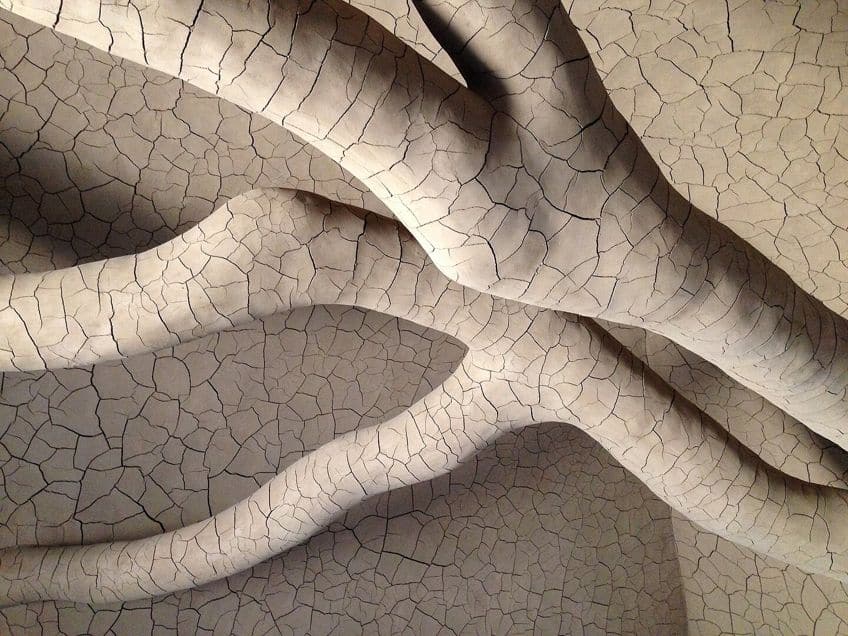
One of his iconic creations, “Roof” (2004), exemplifies Goldsworthy’s inspiration drawn from natural forms. This ephemeral sculpture, constructed from interwoven sticks and leaves, mimics the intricate architecture of a bird’s nest. “Roof” encapsulates Goldsworthy’s ability to coalesce natural elements into temporary yet evocative structures, highlighting the cyclical nature of growth, decay, and renewal.
Through his innovative approach to land art, Goldsworthy invites viewers to contemplate the transient beauty of the natural world, emphasizing the interconnectedness of artistic expression and the ever-changing landscape.
Olafur Eliasson (1967 – Present)
| Date of Birth | 5 February 1967 |
| Age | 56 years old |
| Place of Birth | Copenhagen, Denmark |
| Nationality | Danish-Icelandic |
| Art Movement | Contemporary Art |
| Mediums Used | Installation art, sculpture, painting, photography, film, and architecture |
| Famous Artworks |
|
Olafur Eliasson, the Danish-Icelandic contemporary artist, has made an indelible mark on the art world by seamlessly blending nature, light, and immersive experiences. Born in Copenhagen in 1967, Eliasson’s work is deeply rooted in his fascination with natural forms, as he seeks to engage audiences in a dialogue with the environment. Eliasson’s installations often draw inspiration from the ephemeral beauty of natural phenomena. One of his most famous works, The Weather Project (2003), showcased at Tate Modern in London, invited viewers into a simulated sun, captivating them with a mesmerizing play of light and mirrors. The natural forms of sunlight, clouds, and atmospheric conditions became not just subjects but integral components of the artwork, fostering an immersive experience that blurred the boundaries between reality and perception.

Driven by a commitment to environmental consciousness, Eliasson’s creations often provoke contemplation on humanity’s relationship with the natural world. His pioneering use of light, water, and reflective surfaces exemplifies a profound artistic exploration of natural elements. As an artist dedicated to inspiring awe and introspection, Eliasson continues to shape the contemporary art landscape, inviting viewers to reevaluate their connection to the ever-evolving world around them.
In conclusion, the enchanting world of natural form artists invites us to contemplate the intrinsic beauty embedded in the organic tapestry of our surroundings. Through the meticulous craftsmanship of natural forms sculptures and the eloquent strokes of natural art, these artists illuminate the poetry hidden within the contours of the earth. The question of “what is a natural form” finds its profound answer in the hands of creators inspired by nature, transforming elements such as flowing water, twisting branches, and the play of light into timeless works of art. As we navigate the galleries of these visionaries, we witness a harmonious dialogue between human creativity and the boundless wonders of the natural world. Their art is a testament to the enduring allure that the beauty of nature holds for those who seek to capture and celebrate it through their art.
Take a look at our famous natural form artists webstory here!
Frequently Asked Questions
What Is a Natural Form?
A natural form is a shape, structure, or pattern that exists in the natural world, shaped by the forces of the environment and the inherent processes of growth and development. It encompasses a broad spectrum of elements, ranging from the graceful curves of a seashell to the intricate symmetry of a flower’s petals. Natural forms can be found in landscapes, organisms, and geological features, embodying the diverse and often awe-inspiring beauty of the Earth. These organic shapes serve as a wellspring of inspiration for artists who seek to capture the essence of the world around them, translating the wonders of nature into various art forms, from sculptures to paintings, as they celebrate the captivating intricacies inherent in the natural order.
What Is Naturally Made Art?
Naturally made art refers to creative expressions and formations that emerge organically within the environment, shaped by the forces of nature without deliberate human intervention. This can encompass a wide array of phenomena, from the mesmerizing patterns created by wind-blown sand dunes to the intricate designs found in the veins of leaves. Essentially, naturally made art highlights the inherent beauty and creativity present in the natural world, showcasing the Earth’s capacity to produce visually compelling and harmonious compositions through processes such as erosion, growth, and the play of light. It underscores the idea that artistry is not confined to human creation but is an integral part of the ever-evolving canvas of the natural environment.
Which Famous Artist Make Natural Forms Sculptures?
One of the prominent artists renowned for creating natural forms sculptures is Andy Goldsworthy. His distinctive works often involve arranging or sculpting natural materials such as stones, leaves, and branches into ephemeral and harmonious compositions. Goldsworthy’s art is deeply rooted in his connection with nature, and his sculptures are often transient, subject to the forces of wind, water, and time. Through his innovative approach, Goldsworthy exemplifies how art and nature can coalesce, producing sculptures that echo the beauty and impermanence of the natural world.
Which Famous Artists Are Inspired by Nature?
Numerous famous artists draw profound inspiration from nature, forging a strong connection between their creative expressions and the natural world. One such luminary is Vincent van Gogh, whose vibrant landscapes and intense depictions of nature, such as Starry Night and Irises, reveal an emotional and spiritual connection to the environment. Similarly, Georgia O’Keeffe, recognized for her captivating floral paintings, found a muse in the intricate beauty of flowers, transcending mere representation to convey a deeper connection to the essence of nature. These artists, among many others like Claude Monet, Ansel Adams, and Frida Kahlo, showcase the diverse ways in which the wonders of the natural world continue to serve as a timeless wellspring of inspiration in the realm of artistic creation.
Nicolene Burger is a South African multi-media artist, working primarily in oil paint and performance art. She received her BA (Visual Arts) from Stellenbosch University in 2017. In 2018, Burger showed in Masan, South Korea as part of the Rhizome Artist Residency. She was selected to take part in the 2019 ICA Live Art Workshop, receiving training from art experts all around the world. In 2019 Burger opened her first solo exhibition of paintings titled, Painted Mantras, at GUS Gallery and facilitated a group collaboration project titled, Take Flight, selected to be part of Infecting the City Live Art Festival. At the moment, Nicolene is completing a practice-based master’s degree in Theatre and Performance at the University of Cape Town.
In 2020, Nicolene created a series of ZOOM performances with Lumkile Mzayiya called, Evoked?. These performances led her to create exclusive performances from her home in 2021 to accommodate the mid-pandemic audience. She also started focusing more on the sustainability of creative practices in the last 3 years and now offers creative coaching sessions to artists of all kinds. By sharing what she has learned from a 10-year practice, Burger hopes to relay more directly the sense of vulnerability with which she makes art and the core belief to her practice: Art is an immensely important and powerful bridge of communication that can offer understanding, healing and connection.
Nicolene writes our blog posts on art history with an emphasis on renowned artists and contemporary art. She also writes in the field of art industry. Her extensive artistic background and her studies in Fine and Studio Arts contribute to her expertise in the field.
Learn more about Nicolene Burger and the Art in Context Team.
Cite this Article
Nicolene, Burger, “Natural Form Artists – 10 Creatives Inspired by the Earth.” Art in Context. January 7, 2024. URL: https://artincontext.org/natural-form-artists/
Burger, N. (2024, 7 January). Natural Form Artists – 10 Creatives Inspired by the Earth. Art in Context. https://artincontext.org/natural-form-artists/
Burger, Nicolene. “Natural Form Artists – 10 Creatives Inspired by the Earth.” Art in Context, January 7, 2024. https://artincontext.org/natural-form-artists/.






